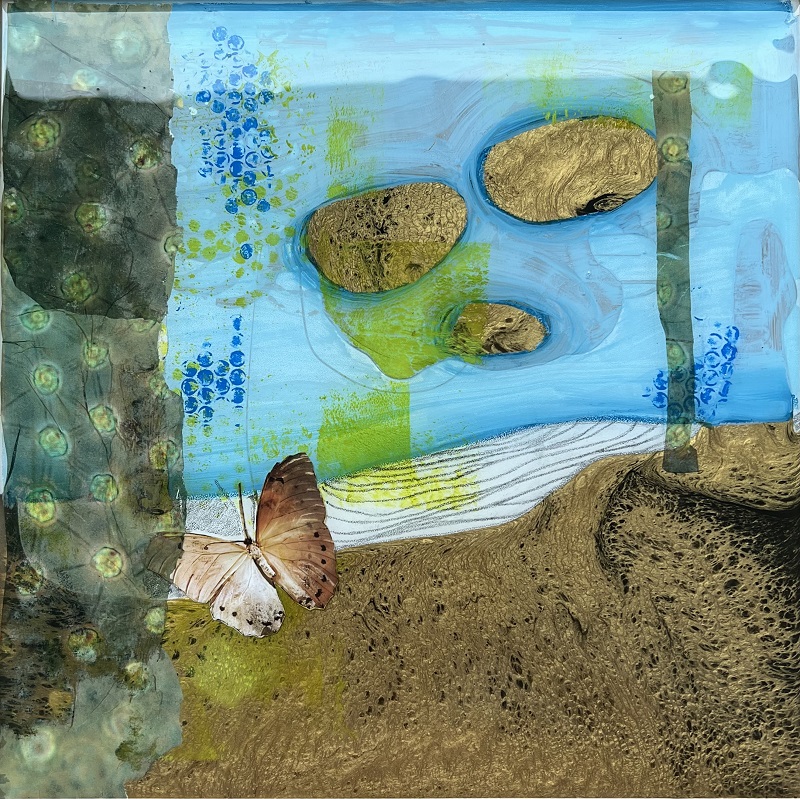
McDonough: Growth Mixed
Download Image: Web
The Lycoming College Art Gallery is gearing up for the unveiling of its annual faculty art exhibition on Friday, Dec. 2, 2022, with a gallery talk at 5:30 p.m. The works of six artists will be on display through Feb. 18, 2023, for a show that is free and open to the public.
The 2022-23 Art Faculty Show will include the following artists:
Seth Goodman
Seth Goodman, associate professor of art at Lycoming College, will show paintings that connect to the social and political dysfunction of our times. Celebrity and class worship, the culture wars, and the politics of disinformation become a part of the content of Goodman's work. His paintings poetically unearth truths that hide just beyond the folly and the fiction of the topical movements of the day.
Goodman teaches painting, drawing, 2-D design and curatorial methods. He exhibits his paintings, drawings and mixed-media work internationally. His paintings examine various cultural expressions of identity as it relates to America’s class structure. Acting as a form of social critique and self-reflection, the work comments on restrictive and unjust social conventions and climates.
Andrea M. McDonough
Andrea M. McDonough is a secondary art educator and K-12 art curriculum coordinator for the Williamsport Area School District. She also supports the art and education departments at Lycoming College.
“Each day, and each art-making session is an opportunity to journey inward. The human experience suggests that we are not the same person that we were yesterday and our emotional landscape will fluctuate with rare identical replication,” said McDonough. “As I approach my work today with an awareness that I did not hold 10 years ago, I am able to let go of the telic tendency of traditional painting and explore the process as it is related to present moment experience. My doctoral research in mindfulness and creativity has led me to develop my art as a practice, a ritual, that incorporates the mind and body; brush and breath.
“I collect materials and incubate ideas, gently, before engaging in a process session. Acrylic gel lifts from vintage National Geographic magazines serve as organic shape accents or grounding subjects. The intuitive assembly of graphite lines, acrylic paint sections, and paper collage lays the foundation for a drawing meditation. Coming into the moment through a body scan, I draw or paint lines that are a reflection of my breath moving through my chest and guiding my hand. If the lines are created with my eyes closed, I may trace or repeat the lines to solidify the portrait of the breath. The entire process is sealed with a magnifying layer of epoxy resin, archiving the experience.”
McDonough is a successful grant-writer with a passion for public art and the promotion of social and emotional learning through mindfulness and creativity. She holds a Pennsylvania K-12 Art Education Certificate and a Pennsylvania PK-12 Supervisory Certificate in Curriculum and Instruction.
John McKaig
John McKaig, professor of drawing and figure drawing at Lycoming College and Bloomsburg University, creates pictures that help him explore the idea of escape, sexuality and ideas of mortality and passage after life, and about how to deal with trauma and healing from that trauma.
“My use of the figure explores my identity as a queer man that is still expected to justify my experiences and basic human identity. I use the human figure in order to communicate essential ideas of how we relate to each other, how we affect each other, and how to move to space that is empowering and encouraging,” he said. “I often depict the figure (or figurative elements or components) in situations or stances that allude to ideas of fighting back, play and wonderment, as well as stoicism and quiet resolve. I also explore the idea of “passage” and “journey,” not only to communicate ideas of healing and working through trauma, but also to communicate the idea of growing beyond limitations and definitions of being - without the suggestion of irony or cynicism.”
McKaig received a B.F.A. in printmaking from Miami University, Oxford, Ohio, and an M.F.A. in printmaking from Syracuse University, Syracuse, N.Y. He has taught printmaking, painting and figure drawing at Syracuse University; drawing and illustration at Cazenovia College; and all levels of painting, drawing, printmaking and photography at the Interlochen Center for the Arts in Michigan, before his current position at Lycoming College and Bloomsburg University. John McKaig has exhibited work in many group and solo exhibitions throughout the United States and internationally (http://johnmurraymckaig.com).
Manuel Moreno Lee
Manuel Moreno Lee, assistant professor of digital art at Lycoming College. “My work focuses on narrative-driven stories and themes of culture, nature, technology, and human identity using a wide range of mediums. While I prefer working on traditional techniques to create my films, the exploration of new technologies is essential in the development and creative process. For Lumens, my fascination with the absence of light led to the concept behind the film while exploring the ideas of hope and personal achievement,” he said.
Moreno-Lee earned his B.F.A. from the University of Massachusetts in Amherst, and his M.F.A. from Rochester Institute of Technology in Film and Animation. Moreno-lee is a 3D generalist and artist whose work has been screened at festivals globally, winning several awards. As a freelance animator, he has worked in Boston, San Francisco, Minneapolis, and Rochester, NY. He works in a wide range of mediums to create narrative-driven work in both 2D and 3D.
Andreas Rentsch
Works on display by Andreas Rentsch, associate professor of art at Lycoming College and chair of the department, were drawn in response to photographic documentation of the January 6 insurrection. Rentsch considers the Pandemonium series to be a microcosm of our society, in which friction, antipathy, and ill feeling dominate our interactions with one another, ultimately dividing us.
“My process translates into meaning. I outline myself in the dark with a flashlight and record these performances onto X-ray and traditional black & white films, using a custom built 16x20” camera. The film is processed by applying photo developer with a brush onto its surface. I then turn on the light before quickly applying photo fixer. Photo bleach is used in most images to “reveal” the figures and make them stand out from a mostly dark background,” said Rentsch. “The outcome is random and unpredictable, reflecting the state of our union.”
Rentsch received his B.F.A. from Les Ecoles d’Arts Appliqués in Vevey, Switzerland and his M.F.A. in Studio Art from Stony Brook University. Having grown up on a prison compound where his father was the warden, Andreas’ work is an ongoing exploration of the connection of fate, geography, and politics in the direction of justice. Andreas's work has been exhibited worldwide, including a solo exhibition at the Musée de l’Elysée in Lausanne, Switzerland, and is in many museum collections (Musée de l’Elysée, Museum of Fine Arts in Houston, Chrysler Museum of Art in Norfolk, Virginia, Musée de la Photographie in Charleroi, Belgium, Heckscher Museum of Art in Huntington, NY, amongst others). He is a recipient of two New York Foundation for the Arts fellowships and two grants from the Polaroid Corporation. The prestigious photography magazine Aperture published one of his portfolios. Other pieces have been published in numerous books and magazines, including “The Polaroid Project,” a book published as part of a 9-museum exhibition of artists that have used the Polaroid film in their work.
Rentsch has taught photography at various institutions such as Stony Brook University, St. John’s University, the International Center of Photography.
Howard Tran
Howard Tran will show works that explore the Chinese and Vietnamese philosophies that are influenced by Buddhism and Taoism--stressing simplicity, worship of ancestors, the cycles of life, and connection to nature. “I explore the connections between the generations before and after, as well as transition, of moving between East and West,” he said.
Tran's artwork ranges from figurative sculpture to abstract two-dimensional pieces. Utilizing traditional and non-traditional materials, he creates pieces that emphasize texture and symbols and reflect his Chinese Vietnamese background. He received his M.F.A. in sculpture from Boston University in 2000. He received his B.F.A. in sculpture from the Academy of Art University in San Francisco in 1998. His work has been exhibited nationally in solo and group exhibitions. Tran teaches sculpture, figure modeling, and drawing at Lycoming College.
Art at Lycoming College
The Lycoming College Art Gallery, located in downtown Williamsport at 25 W. Fourth St., contributes to the city’s arts culture and allows the College to become more involved with the surrounding community. Lycoming Art students have the opportunity to interact with visiting artists and learn first-hand the inner workings of an art gallery. The gallery is open Thursdays, Fridays, and Saturdays from 4-8 p.m. For more information, please visit the gallery online at: https://www.lycoming.edu/art/gallery/22-23.aspx.
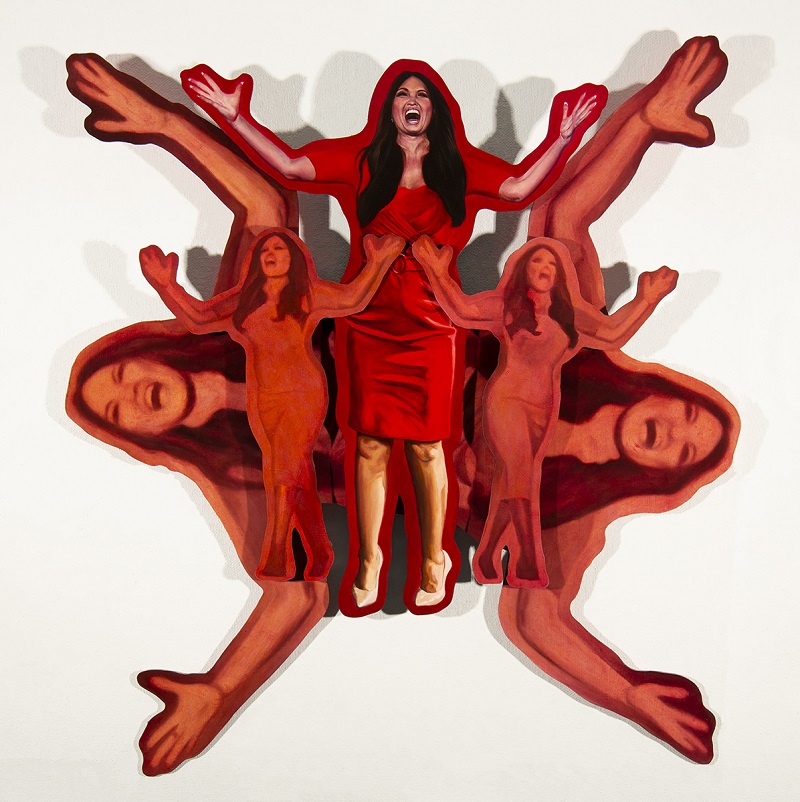
Goodman: NAP2
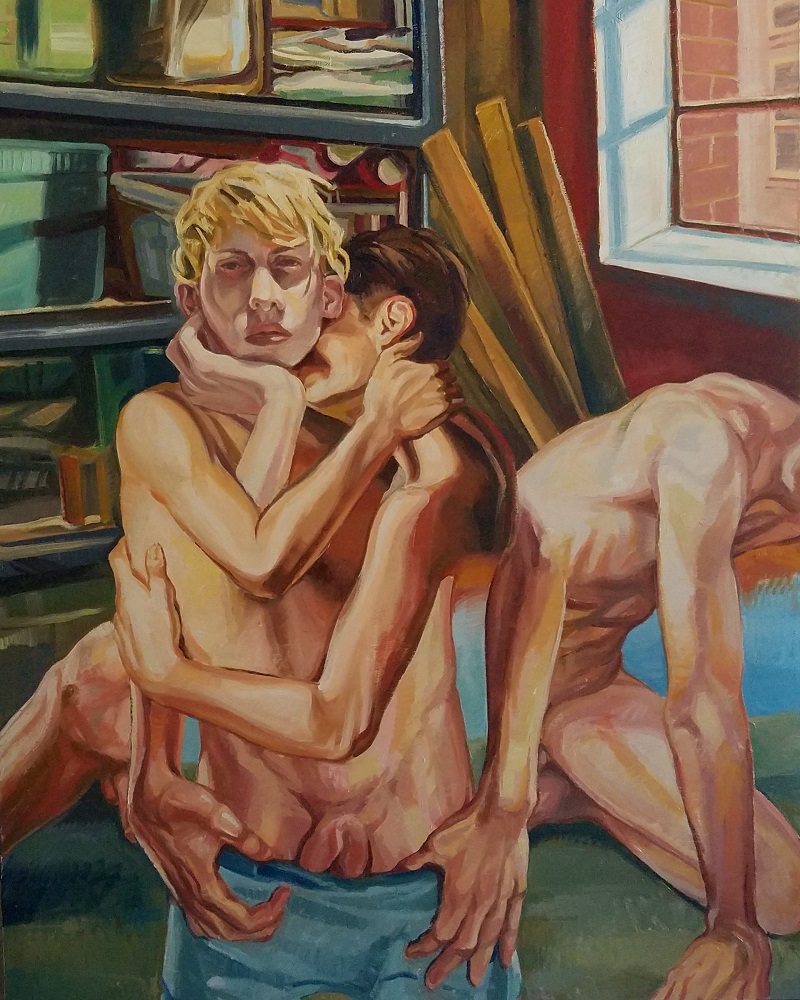
McKaig: Body Not Spirit
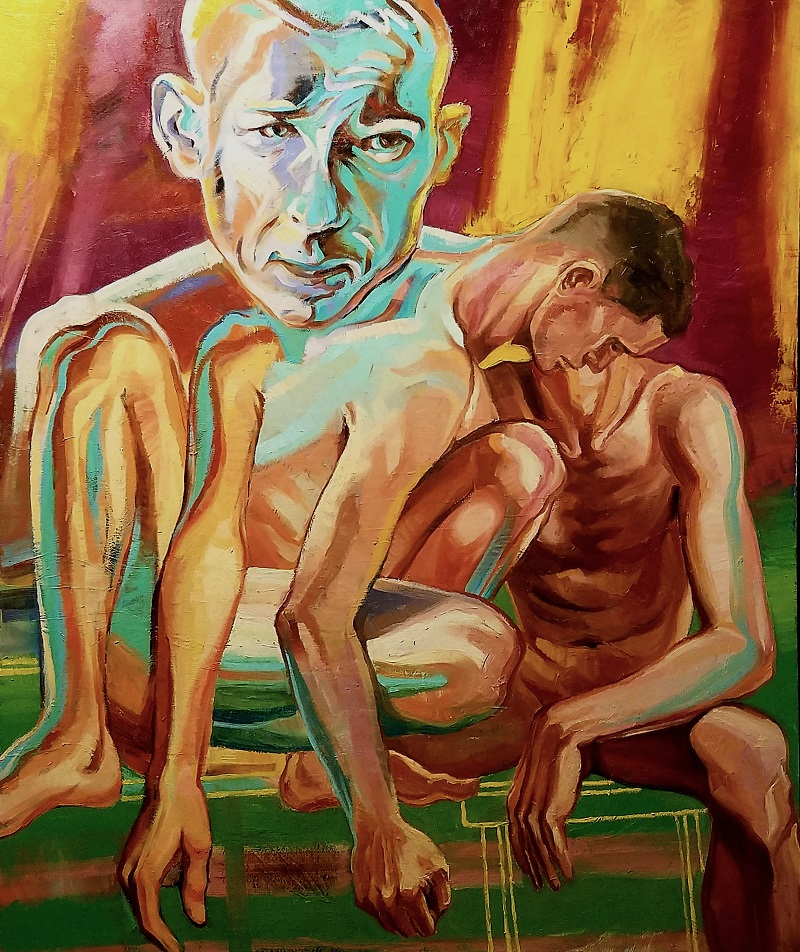
McKaig: Naples Italy
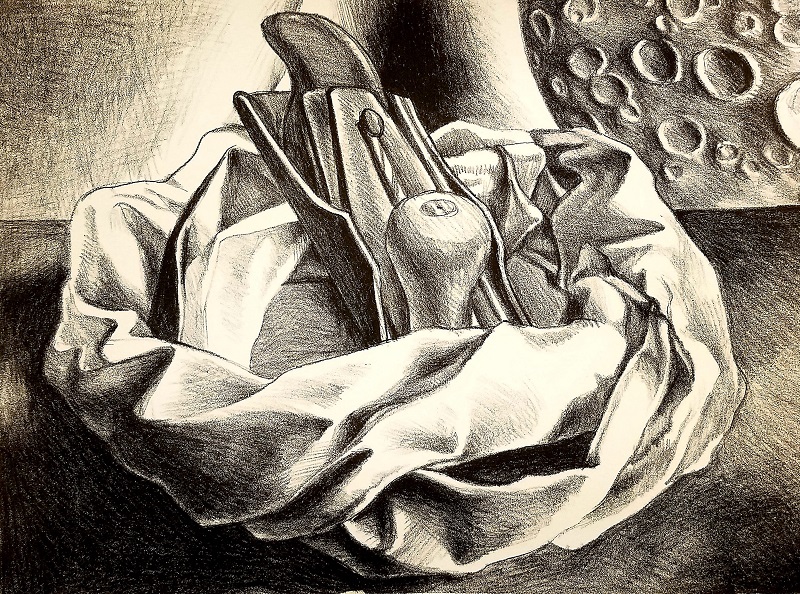
McKaig: Cunabulum
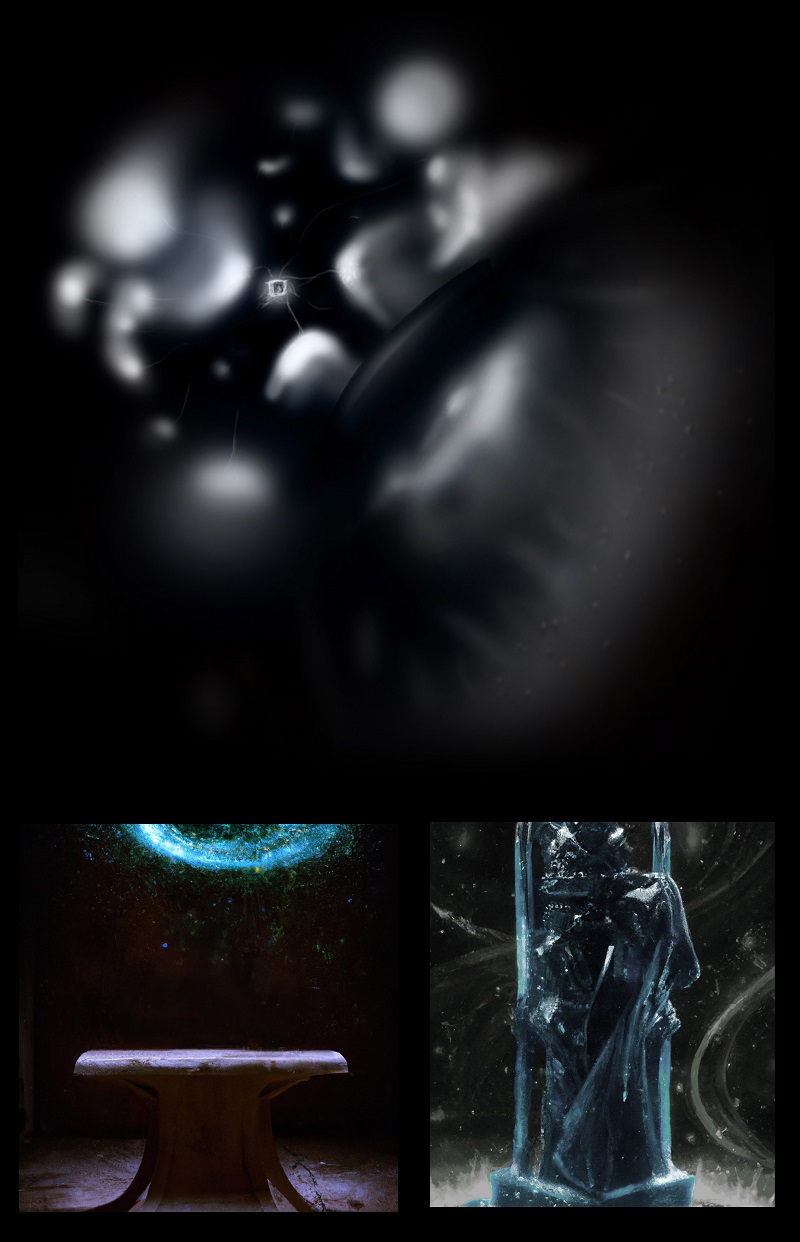
Moreno Lee: Dark Tree
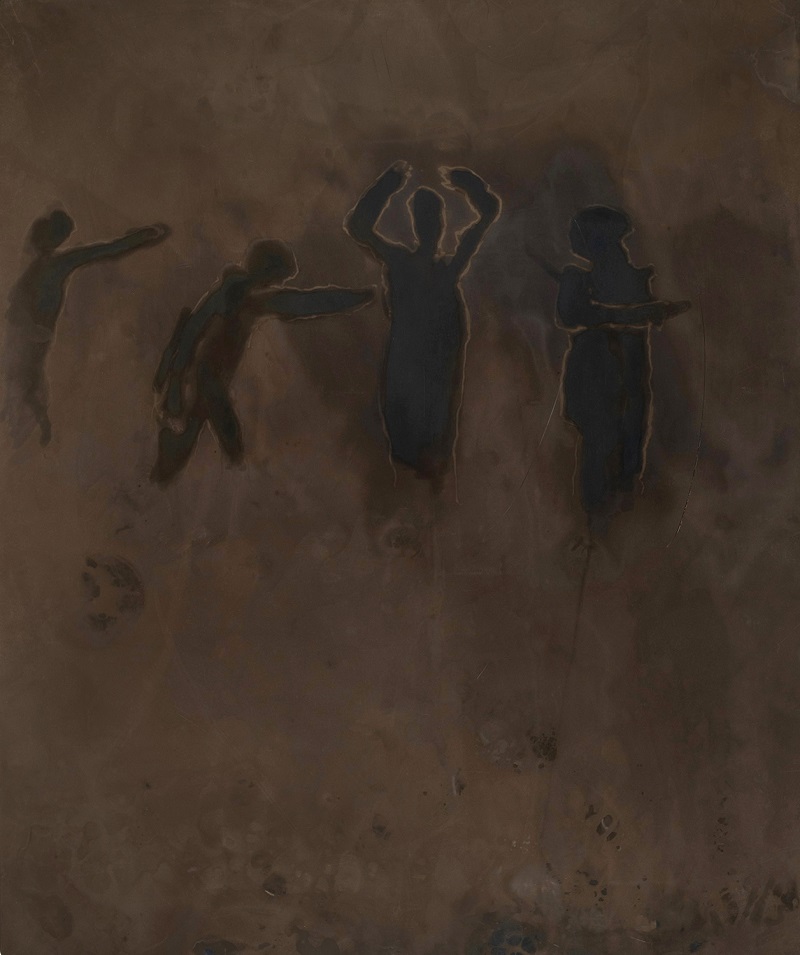
Rentsch 02
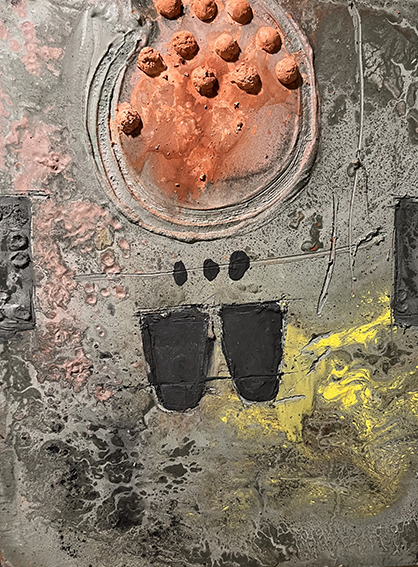
Tran: Bien #7
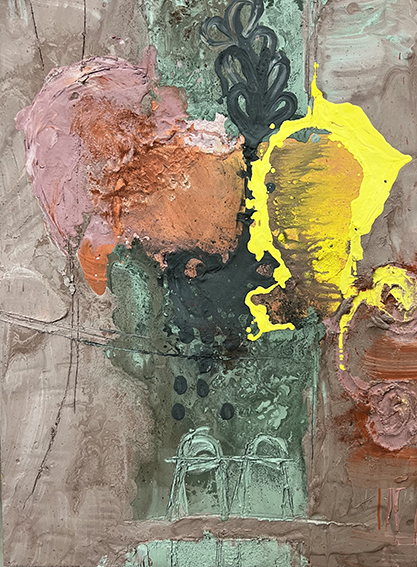
Tran: Bien #8